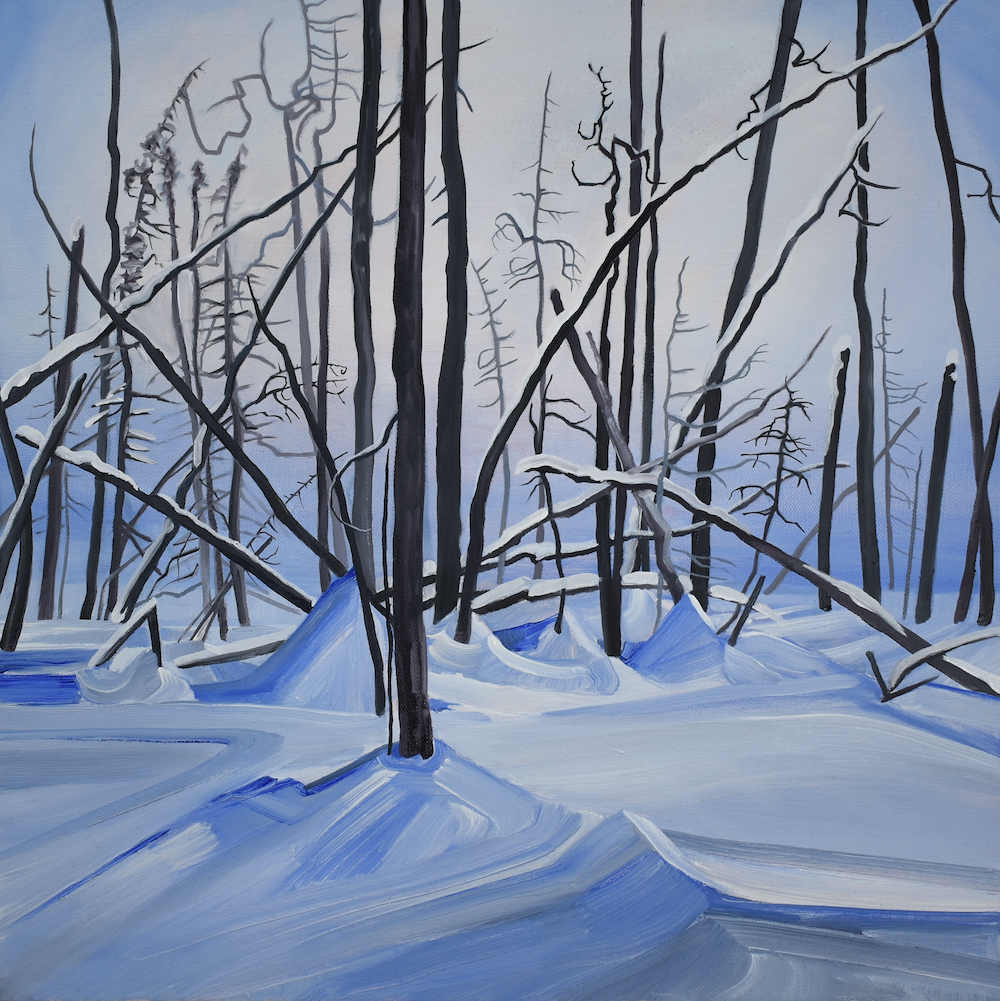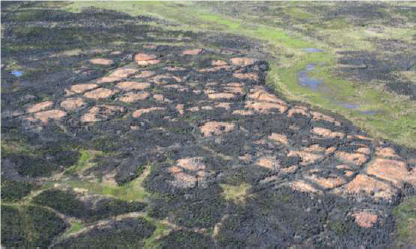Wildfire Walk Interpretive Sign Trail
Coming summer 2024
The Yankovich Road Fire Wildfire Walk Interpretive Sign Trail is designed as an outdoor learning experience. This collaborative project led by the Alaska Fire Science Consortium is conveniently located just north of the University of Alaska campus and is accessible from the Large Animal Research Station on Yankovich Road. The interpretive sign trails leads to a 3.5 acre wildfire that burned in July 2021 and was quickly suppressed.
Tundra Fire Effects Studies
Featured case studies on the effects of fire in Alaska Tundra from partners and cooperators. Wildfires occur less frequently in tundra areas of Alaska than in boreal forest, but the rapid climate warming and longer fire seasons we are now seeing are bringing more fire weather to tundra areas--not only in Western Alaska but also on the North Slope of Alaska--where they have been previously very rare. Tundra fire effects are sometimes not as obvious as forest fire effects, and most tundra plant species recover quickly after fire, yet, on some fires, impacts due to induction of soil warming, thermokarst and shifts induced in plant community make-up have the potential to transform the landscape.
Evaluating the Effectiveness of Fuel Treatments
The Evaluating the Effectiveness of Fuel Treatments in Alaska project was funded by the Joint Fire Science Program (Project 14-5-01-27). The project was designed to assess the effectiveness of maturing treatment projects in terms of previously defined risk reduction and fire behavior objectives in order to better understand the contribution of fuel treatments to the broader economics of wildfire management in Alaska.
Nenana Ridge Experimental Fuels Treatment Research Project
The Nenana Ridge Experimental Fuels Treatment Research Project was funded by the Joint Fire Science Program. The project was designed to quantify the effects of fuels reduction treatments on fire behavior and post-fire vegetation dynamics in Alaska black spruce forests.
Scientists, engineers and foresters from the USFS RMRS Fire, Fuels and Smoke Science Program worked closely with scientists from the USFS Pacific Wildland Fire Sciences Laboratory, the University of Alaska Fairbanks, the BLM Alaska Fire Service and local land managers to measure the effect of different treatments on fire behavior.
The Art of Fire: In Time of Change
In a Time of Change: The Art of Fire is a visual art project designed generate excitement, facilitate mutual understanding and promote meaningful dialogue on issues related to fire science and society. The interaction between artists, fire managers and scientists can promote understanding and awareness of the scientific basis behind fire management practices in the context of Alaska's changing ecosystems.




